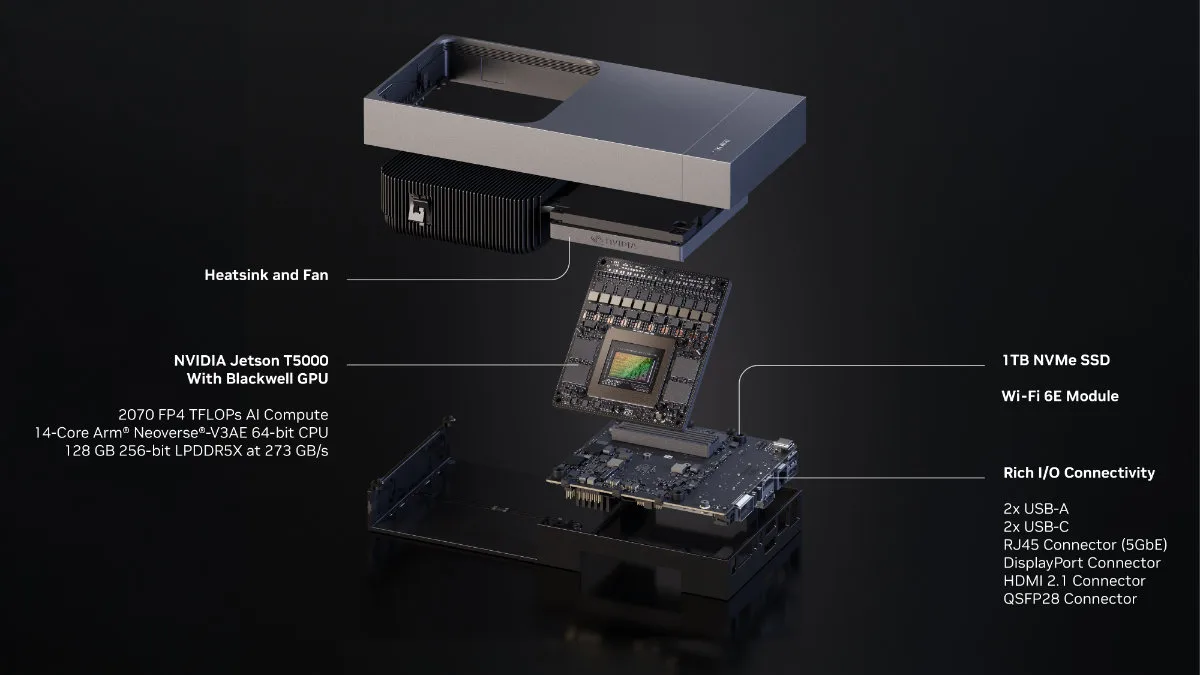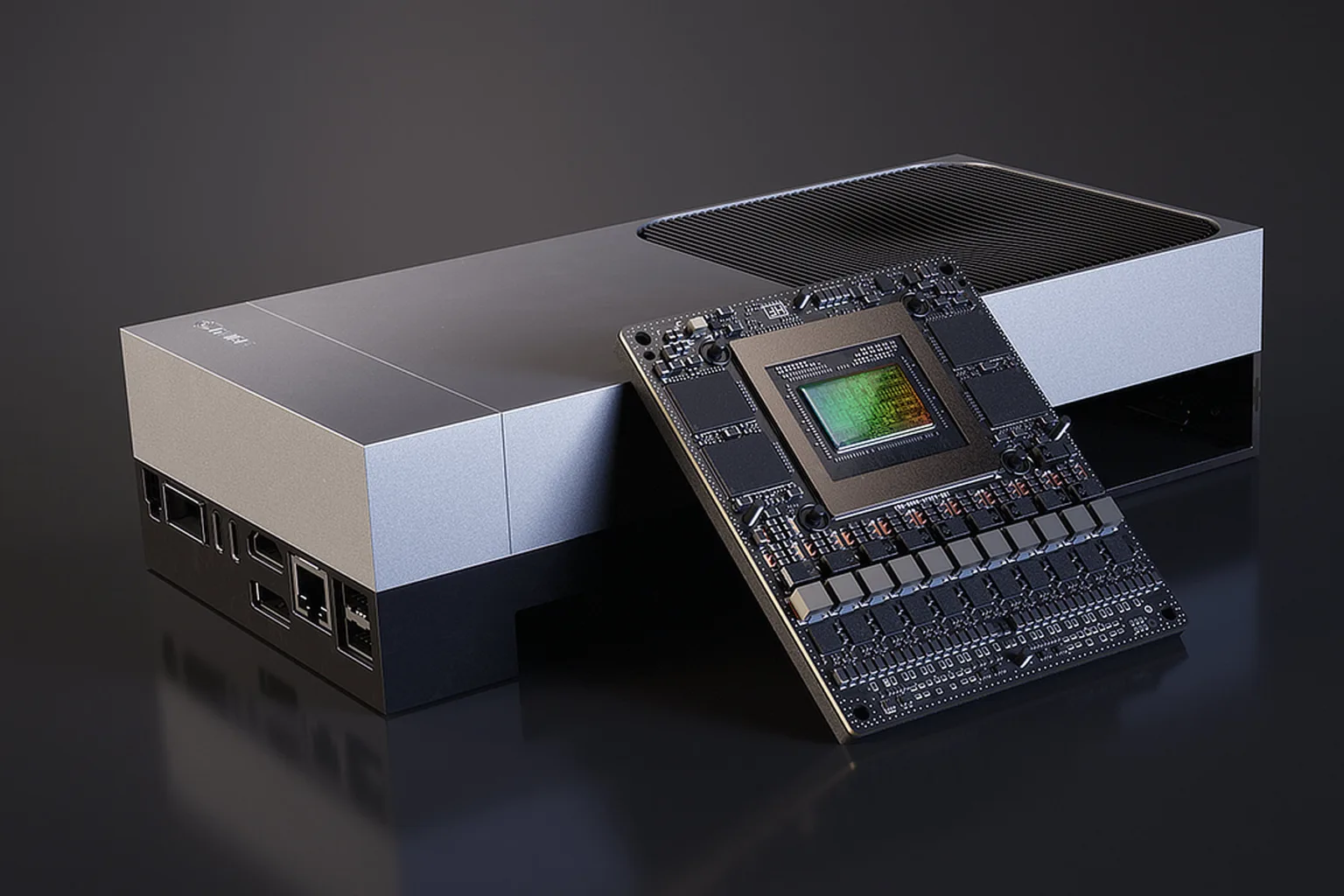NVIDIA’s long-standing Jetson Orin is no longer the company’s fastest edge AI computer. Jetson Thor brings up to 2070 FP4 teraflops of compute to embedded systems and robots. This is a substantial step up from its predecessor, which could deliver up to 275 INT8 teraflops.
Jetson Thor’s performance leap brings to the edge a key new technology that’s becoming more and more prevalent in AI: reasoning. Models that reason can produce much more natural output and are able to interact with people and their surroundings in a way that more primitive models cannot. Jetson Thor is there to act as the brains for future robots and autonomous systems that will have to run cutting-edge models locally, processing complex sensor data in real time.
While most developers are all too used to AI in the cloud, edge AI has key benefits, including deeper integration with hardware and little to no reliance on external infrastructure when making essential decisions, especially in harsh and diverse environments modern robots operate in where such infrastructure might not be readily available. And while NVIDIA doesn’t produce any robots or machinery themselves, Jetsons are meant to empower myriads of third-party designs and services.
“We’ve built Jetson Thor for the millions of developers working on robotic systems that interact with and increasingly shape the physical world,” said Jensen Huang, founder and CEO of NVIDIA. “With unmatched performance and energy efficiency, and the ability to run multiple generative AI models at the edge, Jetson Thor is the ultimate supercomputer to drive the age of physical AI and general robotics.”
Just like all previous Jetson models, the Jetson Thor benefits from and fully integrates with NVIDIA’s Jetson software platform, providing developers with tools required for successful development and deployment of Jetson-based products. Jetson Thor is compatible with other software offerings from NVIDIA, including NVIDIA Isaac, Isaac GR00T, NVIDIA Metropolis and NVIDIA Holoscan.
The Jetson Orin was the company’s best performing Jetson since the series’ inception in 2014. With a firm footing in diverse fields, the Orin lineup features several models, from hobbyist- and educational-grade options like the Jetson Orin Nano to high-end offerings like the AGX Orin. The company expects the Jetson Thor to continue this trend, launching the line by first introducing the highest-end Jetson AGX Thor Developer Kit and two associated production modules: the Jetson T5000 and the cut-down Jetson T4000.

NVIDIA’s partners are already putting this new hardware to use. “As autonomous machines tackle more complex tasks in our customers’ operations, edge computing is critical for real-time decision making,” said Joe Creed, CEO of Caterpillar. “NVIDIA Jetson Thor offers the AI performance we need to develop and deploy the construction and mining equipment of the future, enhancing precision, reducing waste and improving safety for our customers around the globe.”
But just how much more powerful are these new Jetsons? NVIDIA claims a 7.5x increase in AI compute, 3.1x increase in CPU compute and 3.5x higher energy efficiency compared to Jetson Orin, all while fitting in a 130 W power envelope. Specs-wise, the top-end Jetson T5000 module is a sight to behold. 128 GB of speedy LPDDR5X memory (with 273 GB/s bandwidth), a 14-core Arm Neoverse V3AE CPU and a 2560-core NVIDIA Blackwell GPU add up to a powerful, albeit pricey system. The Jetson AGX Thor Developer kit packs the T5000 module together with a reference carrier board available from NVIDIA for $3499, with standalone modules available from the company’s embedded partners for $2999 and $1999 respectively.
Oh, but it’s not yet the end of the road for Jetson Orin. The Jetson Thor series still has no matching replacements for the lower-end Jetson Orin NX and Jetson Orin Nano modules. These, with their more approachable price yet still excellent performance remain key offerings for education and price-conscious designs.
NVIDIA claims that there’s still untapped performance in Jetson Thor which will be unlocked with future software optimization. This is not a first for NVIDIA, and not a first for Jetsons either, with Jetson Xavier getting a 1.5x performance boost during its lifetime and Jetson Orin getting a 2x one. In a similar vein, NVIDIA pushed out a revised Jetson Orin Nano Super model offering 1.7x the performance of its non-Super predecessor — this performance boost also available to owners of the latter through a software update. A spokesperson for NVIDIA told us that Jetson Thor is set to score even larger performance boosts over the course of its lifecycle, with major optimizations already expected in the coming weeks.
“The future of robotics in logistics depends on the ability to deploy increasingly intelligent and autonomous systems,” said Tye Brady, chief technologist at Amazon Robotics. “NVIDIA Jetson Thor offers the computational horsepower and energy efficiency necessary to develop and scale the next generation of AI-powered robots that can operate safely and effectively in dynamic, real-world environments, transforming how we move and manage goods globally.”


